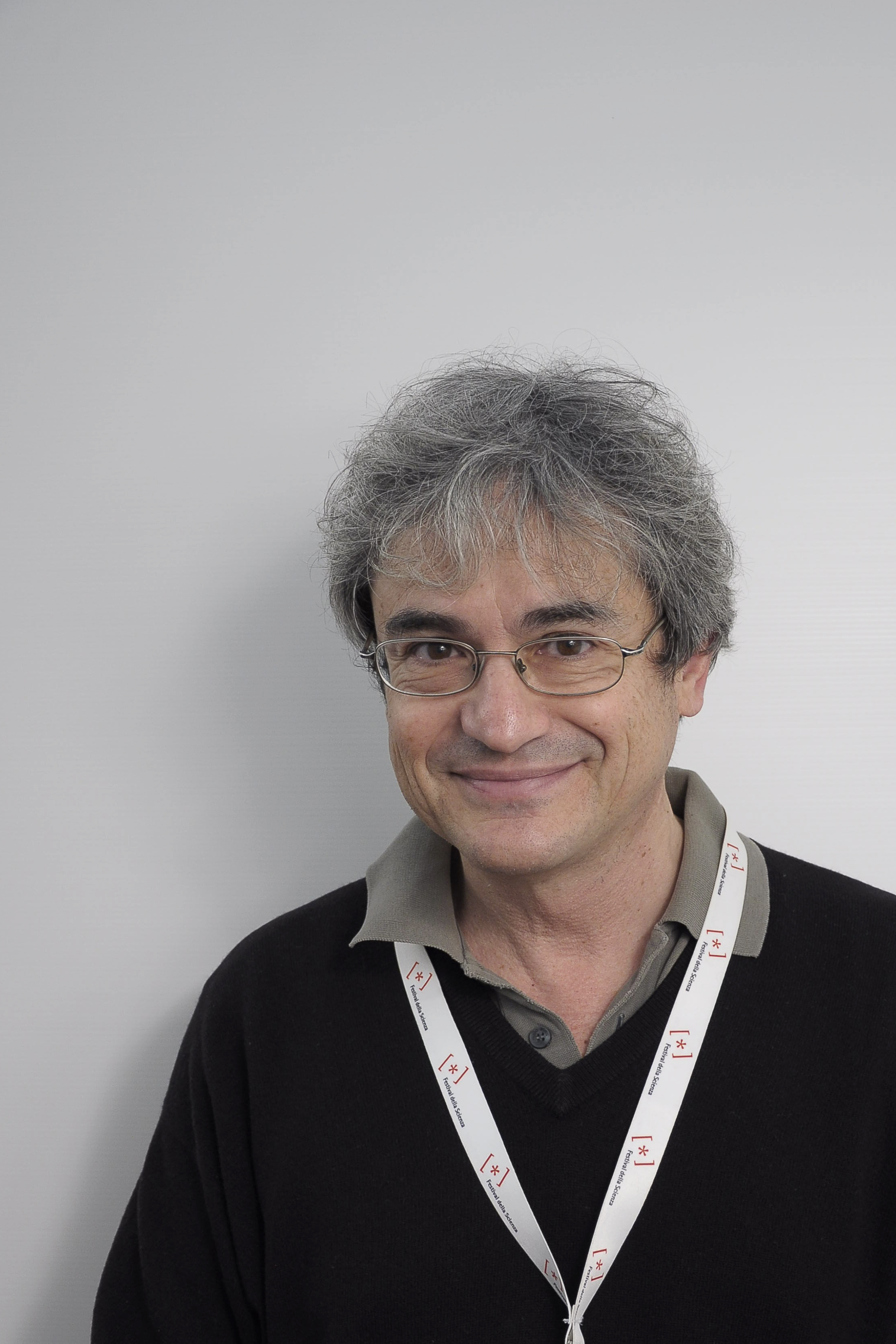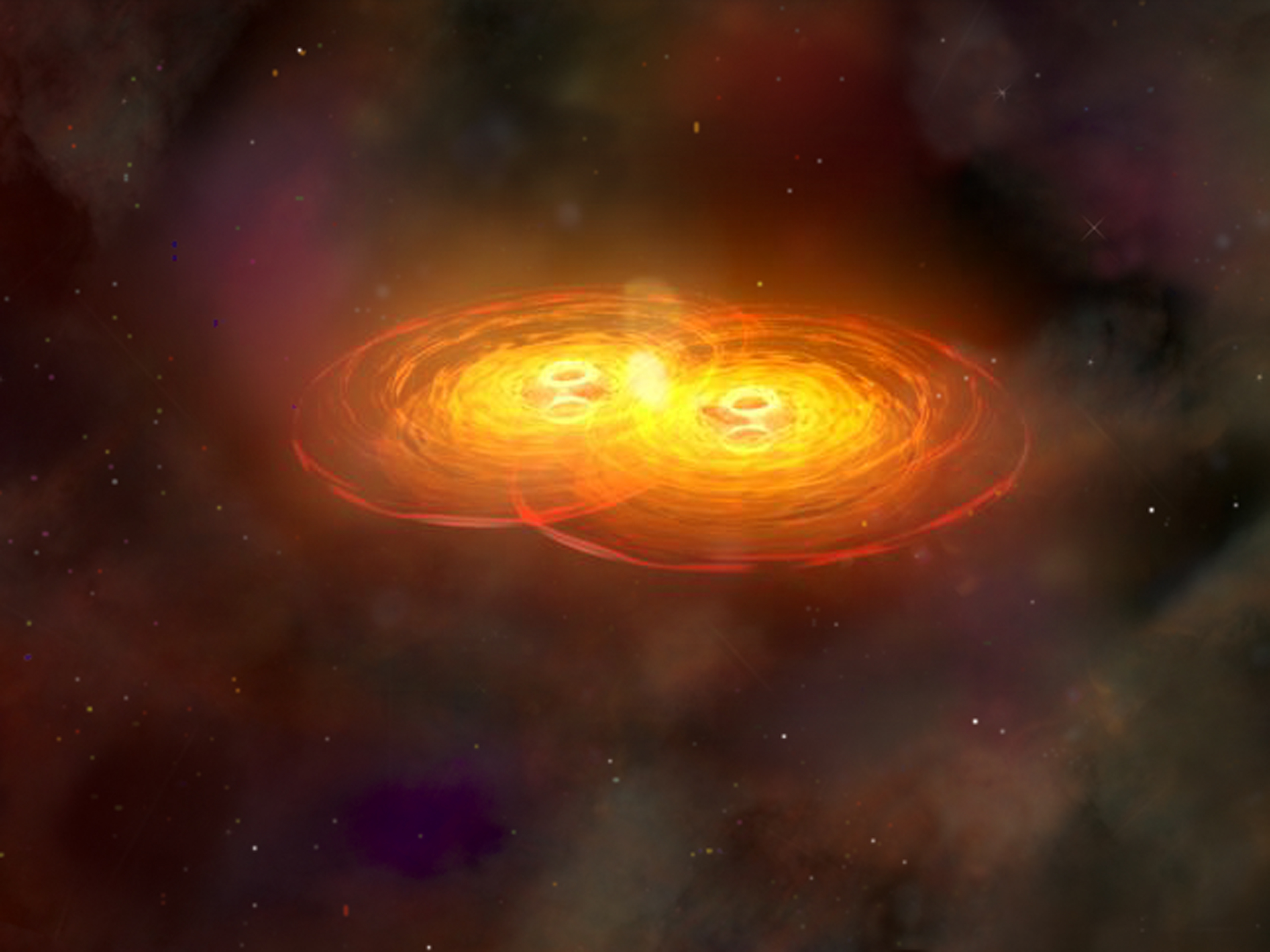|
Thermal Time Hypothesis
The thermal time hypothesis is a possible solution to the problem of time in classical and quantum theory as has been put forward by Carlo Rovelli and Alain Connes. Physical time flow is modeled as a fundamental property of the theory, a macroscopic feature of thermodynamical origin. Overview Generally covariant theories do not have a notion of a distinguished physical time with respect to which everything evolves. However, it is not needed for the full formulation and interpretation of the theory. The dynamical laws are determined by correlations which are sufficient to make predictions. But then a mechanism is needed which explains how the familiar notion of time eventually emerges from the timeless structure to become such an important ingredient of the macroscopic world we live in as well as of our conscious experience. See also * Thermodynamics * Loop quantum gravity Loop quantum gravity (LQG) is a theory of quantum gravity, which aims to merge quantum mechanics and ... [...More Info...] [...Related Items...] OR: [Wikipedia] [Google] [Baidu] |
Problem Of Time
In theoretical physics, the problem of time is a conceptual conflict between general relativity and quantum mechanics in that quantum mechanics regards the flow of time as universal and absolute, whereas general relativity regards the flow of time as malleable and relative. This problem raises the question of what time really is in a physical sense and whether it is truly a real, distinct phenomenon. It also involves the related question of why time seems to flow in a single direction, despite the fact that no known physical laws at the microscopic level seem to require a single direction. For macroscopic systems the directionality of time is directly linked to first principles such as the second law of thermodynamics. Time in quantum mechanics In classical mechanics, a special status is assigned to time in the sense that it is treated as a classical background parameter, external to the system itself. This special role is seen in the standard formulation of quantum mechanics ... [...More Info...] [...Related Items...] OR: [Wikipedia] [Google] [Baidu] |
Carlo Rovelli
Carlo Rovelli (born May 3, 1956) is an Italian theoretical physicist and writer who has worked in Italy, the United States and, since 2000, in France. He is also currently a Distinguished Visiting Research Chair at the Perimeter Institute, and core member of the Rotman Institute of Philosophy of the Western University. He works mainly in the field of quantum gravity and is a founder of loop quantum gravity theory. He has also worked in the history and philosophy of science. He collaborates with several Italian newspapers, including the cultural supplements of the ''Corriere della Sera'', ''Il Sole 24 Ore'' and ''La Repubblica''. His popular science book, ''Seven Brief Lessons on Physics'', was originally published in Italian in 2014. It has been translated into 41 languages and has sold over a million copies worldwide. In 2019, he was included by ''Foreign Policy'' magazine in a list of 100 most influential global thinkers. Life and career Carlo Rovelli was born in Verona, Italy ... [...More Info...] [...Related Items...] OR: [Wikipedia] [Google] [Baidu] |
Alain Connes
Alain Connes (; born 1 April 1947) is a French mathematician, and a theoretical physicist, known for his contributions to the study of operator algebras and noncommutative geometry. He is a professor at the , , Ohio State University and Vanderbilt University. He was awarded the Fields Medal in 1982. Career Source: Academic career timeline: (1966–1970) – Bachelor's degree from the École Normale Supérieure (now part of Paris Sciences et Lettres University). (1973) – doctorate from Pierre and Marie Curie University, Paris, France (1970–1974) – appointment at the French National Centre for Scientific Research, Paris (1975) – Queen's University at Kingston, Ontario, Canada (1976–1980) – the University of Paris VI (1979 – present) – the Institute of Advanced Scientific Studies, Bures-sur-Yvette, France (1981–1984) – the French National Centre for Scientific Research, Paris (1984–2017) – the , Paris (2003–2011) – Vanderbilt University, Na ... [...More Info...] [...Related Items...] OR: [Wikipedia] [Google] [Baidu] |
Arrow Of Time
The arrow of time, also called time's arrow, is the concept positing the "one-way direction" or "asymmetry" of time. It was developed in 1927 by the British astrophysicist Arthur Eddington, and is an unsolved general physics question. This direction, according to Eddington, could be determined by studying the organization of atoms, molecules, and bodies, and might be drawn upon a four-dimensional relativistic map of the world ("a solid block of paper"). Physical processes at the microscopic level are believed to be either entirely or mostly time-symmetric: if the direction of time were to reverse, the theoretical statements that describe them would remain true. Yet at the macroscopic level it often appears that this is not the case: there is an obvious direction (or ''flow'') of time. Overview The symmetry of time ( T-symmetry) can be understood simply as the following: if time were perfectly symmetrical, a video of real events would seem realistic whether played fo ... [...More Info...] [...Related Items...] OR: [Wikipedia] [Google] [Baidu] |
Generally Covariant
In theoretical physics, general covariance, also known as diffeomorphism covariance or general invariance, consists of the invariance of the ''form'' of physical laws under arbitrary differentiable coordinate transformations. The essential idea is that coordinates do not exist ''a priori'' in nature, but are only artifices used in describing nature, and hence should play no role in the formulation of fundamental physical laws. While this concept is exhibited by general relativity, which describes the dynamics of spacetime, one should not expect it to hold in less fundamental theories. For matter fields taken to exist independently of the background, it is almost never the case that their equations of motion will take the same form in curved space that they do in flat space. Overview A physical law expressed in a generally covariant fashion takes the same mathematical form in all coordinate systems, and is usually expressed in terms of tensor fields. The classical (non- quantum) ... [...More Info...] [...Related Items...] OR: [Wikipedia] [Google] [Baidu] |
Physical Time
Time is the continued sequence of existence and events that occurs in an apparently irreversible succession from the past, through the present, into the future. It is a component quantity of various measurements used to sequence events, to compare the duration of events or the intervals between them, and to quantify rates of change of quantities in material reality or in the conscious experience. Time is often referred to as a fourth dimension, along with three spatial dimensions. Time has long been an important subject of study in religion, philosophy, and science, but defining it in a manner applicable to all fields without circularity has consistently eluded scholars. Nevertheless, diverse fields such as business, industry, sports, the sciences, and the performing arts all incorporate some notion of time into their respective measuring systems. 108 pages. Time in physics is operationally defined as "what a clock reads". The physical nature of time is addre ... [...More Info...] [...Related Items...] OR: [Wikipedia] [Google] [Baidu] |
Thermodynamics
Thermodynamics is a branch of physics that deals with heat, work, and temperature, and their relation to energy, entropy, and the physical properties of matter and radiation. The behavior of these quantities is governed by the four laws of thermodynamics which convey a quantitative description using measurable macroscopic physical quantities, but may be explained in terms of microscopic constituents by statistical mechanics. Thermodynamics applies to a wide variety of topics in science and engineering, especially physical chemistry, biochemistry, chemical engineering and mechanical engineering, but also in other complex fields such as meteorology. Historically, thermodynamics developed out of a desire to increase the efficiency of early steam engines, particularly through the work of French physicist Sadi Carnot (1824) who believed that engine efficiency was the key that could help France win the Napoleonic Wars. Scots-Irish physicist Lord Kelvin was the first to ... [...More Info...] [...Related Items...] OR: [Wikipedia] [Google] [Baidu] |
Loop Quantum Gravity
Loop quantum gravity (LQG) is a theory of quantum gravity, which aims to merge quantum mechanics and general relativity, incorporating matter of the Standard Model into the framework established for the pure quantum gravity case. It is an attempt to develop a quantum theory of gravity based directly on Einstein's geometric formulation rather than the treatment of gravity as a force. As a theory LQG postulates that the structure of space and time is composed of finite loops woven into an extremely fine fabric or network. These networks of loops are called spin networks. The evolution of a spin network, or spin foam, has a scale above the order of a Planck length, approximately 10−35 meters, and smaller scales are meaningless. Consequently, not just matter, but space itself, prefers an atomic structure. The areas of research, which involves about 30 research groups worldwide, share the basic physical assumptions and the mathematical description of quantum space. Research has ev ... [...More Info...] [...Related Items...] OR: [Wikipedia] [Google] [Baidu] |
Time In Physics
Time in physics is defined by its measurement: time is what a clock reads. In classical, non-relativistic physics, it is a scalar quantity (often denoted by the symbol t) and, like length, mass, and charge, is usually described as a fundamental quantity. Time can be combined mathematically with other physical quantities to derive other concepts such as motion, kinetic energy and time-dependent fields. ''Timekeeping'' is a complex of technological and scientific issues, and part of the foundation of '' recordkeeping''. Markers of time Before there were clocks, time was measured by those physical processes which were understandable to each epoch of civilization: *the first appearance (see: heliacal rising) of Sirius to mark the flooding of the Nile each year Otto Neugebauer ''The Exact Sciences in Antiquity''. Princeton: Princeton University Press, 1952; 2nd edition, Brown University Press, 1957; reprint, New York: Dover publications, 1969. Page 82. *the periodic s ... [...More Info...] [...Related Items...] OR: [Wikipedia] [Google] [Baidu] |
Philosophy Of Time
Philosophy (from , ) is the systematized study of general and fundamental questions, such as those about existence, reason, knowledge, values, mind, and language. Such questions are often posed as problems to be studied or resolved. Some sources claim the term was coined by Pythagoras ( BCE), although this theory is disputed by some. Philosophical methods include questioning, critical discussion, rational argument, and systematic presentation. in . Historically, ''philosophy'' encompassed all bodies of knowledge and a practitioner was known as a ''philosopher''."The English word "philosophy" is first attested to , meaning "knowledge, body of knowledge." " natural philosophy," which began as a discipline in ancient India and Ancient Greece, encompasses astronomy, medicine, and physics. For example, Newton's 1687 '' Mathematical Principles of Natural Philosophy'' later became classified as a book of physics. In the 19th century, the growth of modern research ... [...More Info...] [...Related Items...] OR: [Wikipedia] [Google] [Baidu] |






